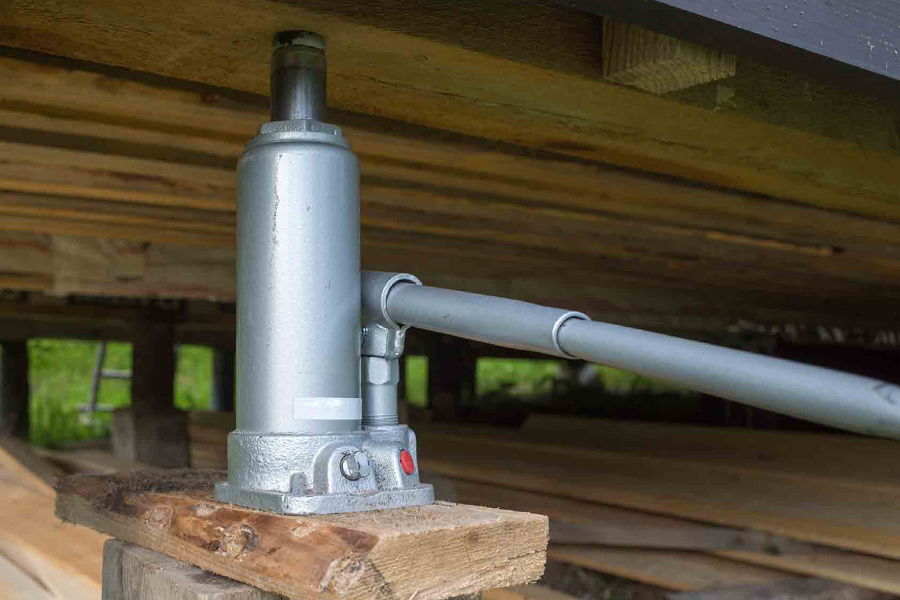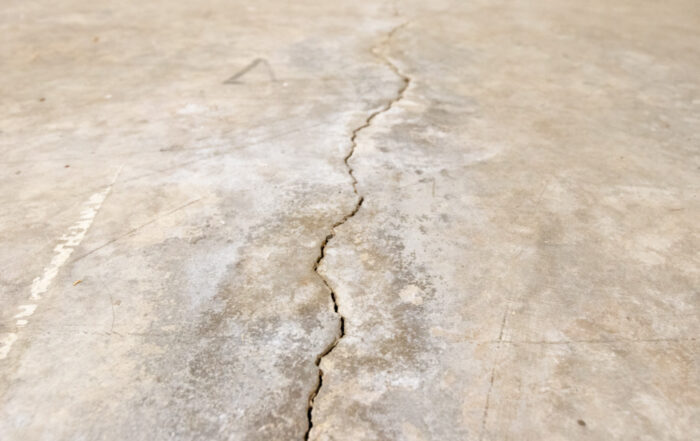Lifting a House to Fix Foundation

Over time, homes can experience foundation problems due to soil movement, water damage, or poor initial construction. In Texas, where expansive clay soils and weather extremes are common, foundation issues are not uncommon. One of the more complex but effective solutions is lifting a house to repair the underlying foundation. House lifting allows contractors to access the compromised foundation, reinforce it, and ensure the home remains structurally sound for years to come.
This process, known as house raising or foundation lifting, involves elevating the home from its original position to make structural repairs, install new supports, or level the foundation. Below, we’ll explore the circumstances that require house lifting, the methods used, the steps involved, the benefits, potential risks, and what homeowners can expect during the process.
Why Lift a House to Fix the Foundation?
There are several reasons why lifting a house becomes necessary, particularly for foundation repair. These situations often involve significant structural concerns that cannot be addressed through simpler methods like patching cracks or stabilizing the foundation with piers.
-
Foundation Settlement:
Over time, a foundation can sink unevenly due to shifting soil or poor compaction during construction. This leads to uneven floors, cracked walls, and misaligned doors and windows. -
Soil Movement:
Expansive clay soils, common in Texas, swell when wet and shrink when dry. These soil movements can cause foundations to heave, crack, or shift, requiring the home to be lifted and the foundation re-leveled. -
Flood Damage:
Flood-prone areas may require homes to be elevated to prevent future flooding, as well as repair water-damaged foundations. Lifting the house ensures the foundation is waterproofed and reinforced. -
Rotting or Shifting Wooden Supports:
In older homes with pier and beam foundations, wooden beams may rot or shift over time. Lifting the house allows contractors to replace these supports with more durable materials. -
Basement or Crawl Space Installation:
Homeowners who want to install a basement or convert a crawl space into a livable area may need to lift the home to make room for excavation and construction. -
Structural Modifications or Additions:
In some cases, lifting a house becomes part of a renovation or remodeling project, such as adding new stories or increasing the home’s elevation.
Methods for Lifting a House
There are several methods used to lift a house, depending on the type of foundation, soil conditions, and extent of the damage. Below are the most common techniques used by foundation repair specialists.
-
Hydraulic Jacks:
Hydraulic jacks are positioned under the house and used to gradually lift the structure. These jacks distribute weight evenly across the home to prevent structural damage during lifting. -
Synchronized Jacking Systems:
For larger or more complex homes, a synchronized jacking system may be used. This method ensures that all parts of the house are lifted at the same time, reducing the risk of uneven pressure on the structure. -
Helical Piers or Steel Push Piers:
In cases where soil instability is a concern, contractors may use helical piers or steel push piers to lift and stabilize the foundation. These piers are driven deep into stable soil layers to provide support during the lifting process. -
Temporary Cribbing:
Cribbing involves placing temporary wooden or steel beams under the house to support it while the foundation is being repaired or replaced. Once the foundation work is complete, the home is lowered back onto the repaired foundation.
Steps Involved in Lifting a House to Repair the Foundation
The process of lifting a house to fix the foundation involves several carefully planned steps. Each step must be executed with precision to avoid damage to the structure and ensure a successful repair.
-
Structural Assessment:
A structural engineer or foundation specialist inspects the home to determine the extent of the foundation issues and develop a repair plan. -
Site Preparation:
Contractors clear the area around the home, removing plants, debris, and obstacles. Utility lines such as water, gas, and electricity are disconnected to ensure safety during the lifting process. -
Installing Lifting Equipment:
Hydraulic jacks or synchronized jacking systems are positioned under the home’s load-bearing points to distribute weight evenly. -
Gradual Lifting:
The house is raised slowly to prevent structural damage. Contractors monitor the process carefully, ensuring that walls, floors, and windows remain intact. -
Foundation Repair:
Once the house is lifted, contractors repair or replace the damaged foundation. This may include leveling the slab, installing new piers, or replacing rotted wooden supports. -
Lowering the House:
After the foundation work is complete, the house is carefully lowered onto the repaired foundation. Contractors ensure that the home sits evenly to avoid future settlement issues. -
Reconnecting Utilities:
The final step involves reconnecting all utilities and inspecting the property to ensure everything is functioning properly.
Benefits of Lifting a House for Foundation Repairs
Although lifting a house is a complex and costly undertaking, it offers several long-term benefits for homeowners.
-
Prevents Further Structural Damage:
Addressing foundation issues early prevents them from worsening and causing more extensive (and expensive) repairs down the line. -
Increases Property Value:
Homes with stable foundations have higher resale values, as buyers are more confident in their structural integrity. -
Reduces Flood Risk:
In flood-prone areas, elevating a home above flood levels protects it from future water damage and may reduce insurance premiums. -
Improves Longevity:
Reinforcing or replacing the foundation ensures that the home remains stable for decades, providing peace of mind for homeowners. -
Facilitates Renovations:
Lifting the house allows for modifications such as adding a basement or crawl space, enhancing the property’s functionality.
Potential Risks and Challenges
While lifting a house offers many benefits, the process is not without risks and challenges. Homeowners should be aware of potential complications and work with experienced contractors to mitigate them.
-
Structural Damage:
If not executed carefully, the lifting process can cause cracks in walls, misaligned doors, or broken windows. -
High Costs:
House lifting is labor-intensive and requires specialized equipment, making it one of the more expensive foundation repair methods. -
Permitting and Regulations:
In some areas, homeowners may need permits or approval from local authorities to lift a house, especially if the elevation change is significant. -
Extended Timeframe:
The process can take several weeks to complete, requiring homeowners to temporarily relocate. -
Unexpected Soil Issues:
During foundation repair, contractors may discover additional soil instability or damage that requires further work, increasing costs and timelines.
Conclusion
Lifting a house to fix foundation issues is a complex but effective solution for addressing serious structural problems. Whether dealing with foundation settlement, soil movement, or flood damage, house lifting allows contractors to access the foundation and perform the necessary repairs. While the process can be costly and time-consuming, it offers long-term benefits such as increased property value, improved safety, and reduced flood risk.
Homeowners considering house lifting should work with experienced foundation repair specialists to ensure the process is executed safely and efficiently. Proper planning, regular inspections, and selecting the right repair method can ensure the stability and longevity of the home for many years to come.



